A non-exhaustive and simplified list of mushrooms that you may encounter on your foraging forays.
A basket of boletes.
Boletes:
- Your mushroom will have a sponge of pores and tubes underneath the cap, not gills.
- The colour of the cap is irrelevant -- they are too variable to assist in the identification of species.
- Is the spongey underside of the cap yellowish or reddish?
- Does the sponge stain (usually blue) when touched?
- If the sponge is cream coloured and does not stain you have either Edible Cep Boletus edulis (Fr. Cèpe de Bordeaux) or Dark Bolete Boletus aereus (Fr. Tête de negre), the two most prized edible species.
- Edible Cep has a very fine white line around the edge of the cap, at the horizon between the flesh and the skin.
- Dark Bolete has no such fine white line.
- If your mushroom has a cap that feels like nubuck and a yellow sponge that stains blue then you have a Bay-brown Bolete Xerocomus badius (Fr. Bolet bai), another highly prized species. Note that the flesh does not discolour when cut in this species, only the sponge.
- If your mushroom has a reddish sponge, be careful as the few toxic boletes belong in this group.
- If there is a red line on the horizon between tubes and flesh and it is red down the stem, this is a toxic species.
- Many species will discolour and go completely black (sponge and flesh) when cut. This is not an indication of toxicity, but it does mean they are not amongst the most prized species as they do not look very appetising.
Amanita spp:
- This genus includes Fly Agaric Amanita muscaria (Fr. Amanite tue-mouches) and Death Cap Amanita phalloides (Fr. Amanite phalloïdes), the most toxic mushroom in France.
- Many species are toxic and have white flakes on the cap.
- All the toxic species of Amanita have white gills.
- Mushrooms in this genus have a cap which separates easily from the stem; a stem ring; a volva (a sort of bag that the base of the stem sits in).
- Two abundant and very similar species are Panther Cap Amanita pantherina (Fr. Amanite panthère) and Blusher Amanita rubescens (Fr. Amanite rougissante).
- Panther Cap has stripes on the edge of the cap and rings around the foot. It is very toxic.
- Blusher stains pink when scraped, no foot rings and no stripes on the edge of the cap. It is edible, but is so easy to mix up with the Panther Cap it isn't worth the risk of eating.
Milkcap.
Russulaceae:
- Milkcaps Lactaria spp and Brittlegills Russula spp.
- Mushrooms in this family have stems that snap like chalk.
- Lactaria spp weep 'milk' if their gills are touched, Russula spp do not.
- The colour of the milk, whether white or yellow, can aid identification of Lactarius to species level.
- The milk is acrid.
- If your Russula has gills that do not shatter when rubbed it is Charcoal Burner Russula cyanoxantha (Fr. Charbonnière)
- If your Russula has stems that redden when scraped you have Blackening Brittlegill Russula nigricans (Fr. russule noircissante), which will ultimately turn entirely black. Other similar species turn black with no intermediary red stage.
Cortinarius spp:
- Webcaps (Fr. Cortinaires).
- All species have rust coloured spores, which stain the gills and the top of the stem.
- All species have a 'spiderweb' around the edge of the cap and near the top of the stem.
- All species are toxic.
Lepiotes:
- Like Amanita they have a stem ring and white gills.
- The key difference is that Lepiotes do not have a volva (the sack around the foot).
- A Lepiote's stem ring will slide up and down the stem.
- There is only one edible species -- Parasol Macrolepiota procera (Fr. Coulemelle).
- If you have a Lepiote with no 'snakeskin' pattern on the stem, no double stem ring, and under 15 cm tall, do not eat it.
- Small Lepiotes smell nice but are very toxic.
Agaricus spp:
- This genus includes Field Mushroom Agaricus campestris (Fr. Agaric champêtre), Horse Mushroom Agaricus arvensis (Fr. Boule de neige) and Button Mushroom Agaricus bisporus (Fr. Champignon de Paris), pink or brown gilled, with a double stem ring.
- If your Agaric smells of aniseed and the stem stains reddish if scraped, it is edible.
- If your Agaric has a stem which stains yellow if scraped, it is not edible.
- If your Agaric has a long root, do not eat it.
- Do not pick and eat mushrooms from the side of the road, because of pollution levels.
Yellowing Curtain Crust.
Bracket Fungi:
- do not eat -- not because they are toxic, but because it would be like eating wood.
Trooping Funnel.
Other Groups:
- Tricholomataceae -- includes funnel mushrooms, fibrecaps and blewits.
- Laccaria spp -- Deceivers.
- Mycena spp -- Bonnets.
- Coprinus spp -- Ink Caps.
- Chanterelles and girolles.
- Morels.
- Corals.
- Stinkhorns.
- Ascomycetes -- includes dog lichens and elf cups.
- Waxcaps.
************************************************
For details of our private guided tours of chateaux, gardens, wineries, markets and more please visit the Loire Valley Time Travel website. We would be delighted to design a tour for you.
We are also on Instagram, so check us out to see a regularly updated selection of our very best photos.
We are also on Instagram, so check us out to see a regularly updated selection of our very best photos.


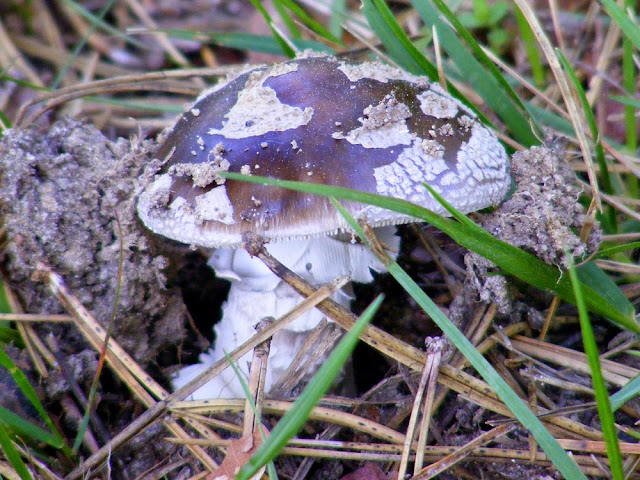

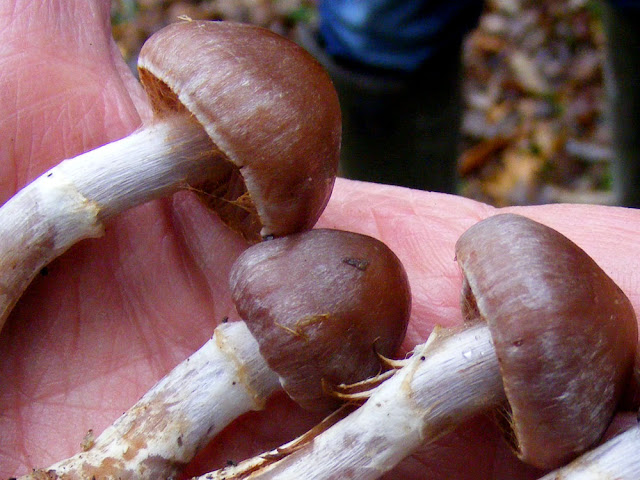
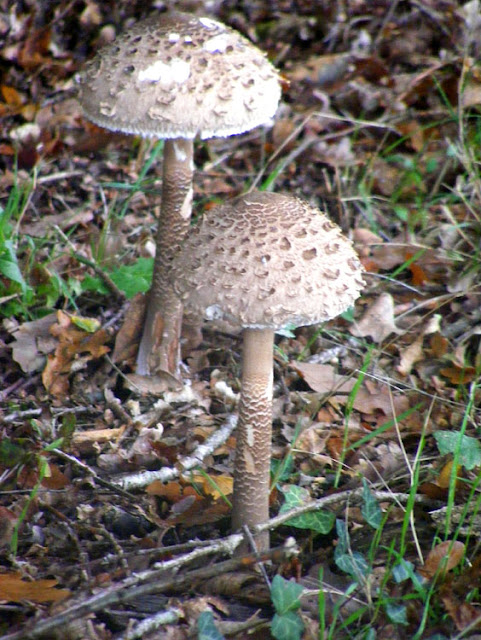

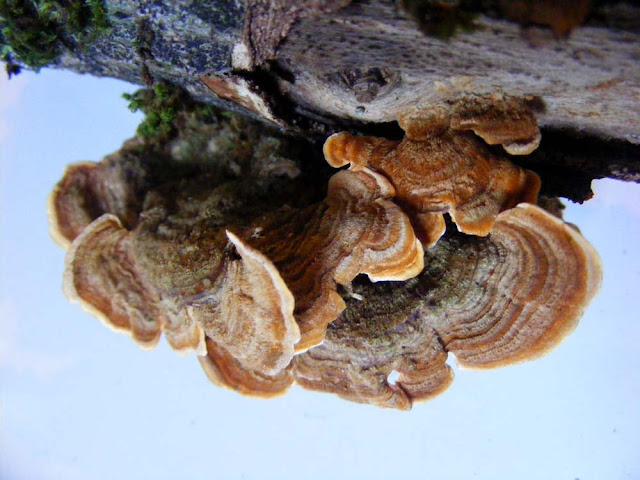
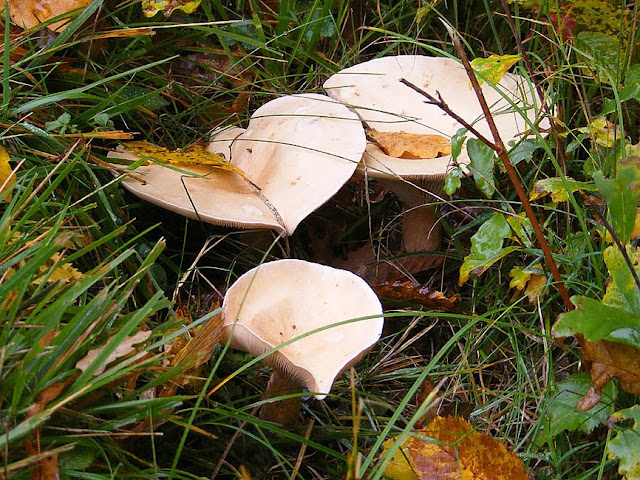

2 comments:
Will stick to buying mine!
I mostly do too. After all, I've got access to excellent cave grown mushrooms, so I don't need the fly blown wild versions :-)
Post a Comment